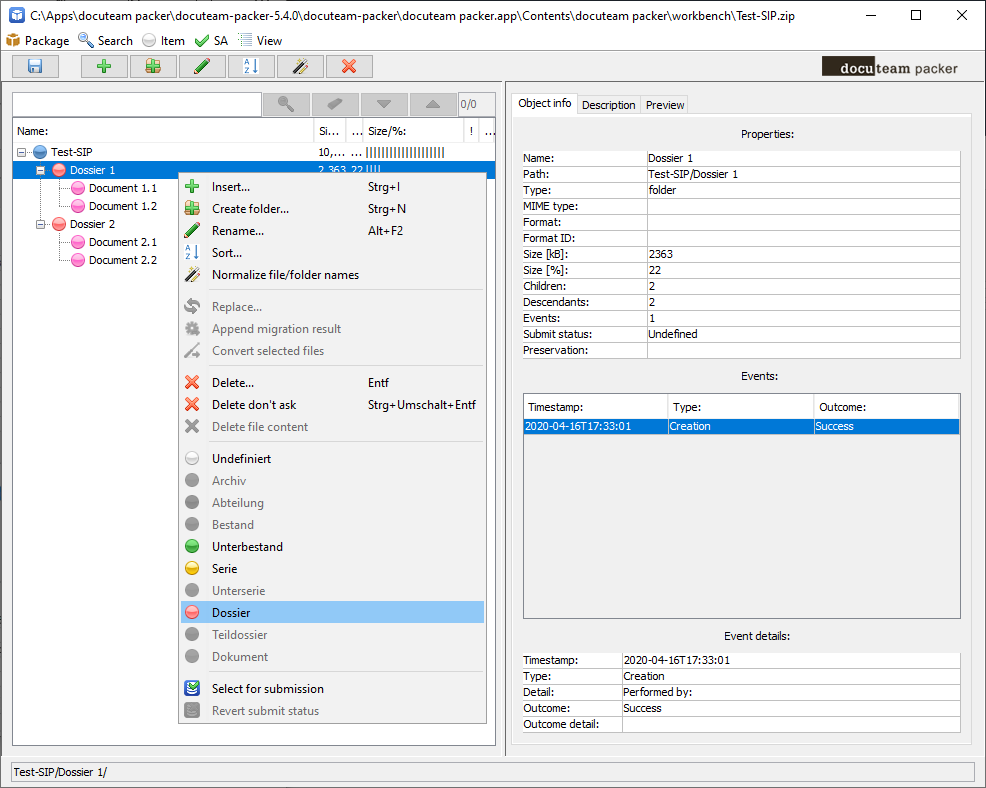Structure
The objects in a SIP are always structured as a tree. As a result, each SIP consists of a single root object to which other objects can be subordinate. The root object can be either a folder or a file. This also applies to all other elements. In this respect, the structure in packer corresponds to that of SIP on the file system. Pure structure elements are therefore not possible.

In addition to the root object, the file with the structure information and metadata is located at the top level in a SIP. It is called mets.xml and is not displayed in the user interface itself. Unpack the SIP on your file system to open the mets.xml. The mets.xml follows the standard Matterhorn METS. This combines the three standards METS, PREMIS and EAD. It prescribes how the technical, administrative and descriptive metadata are to be used.
A level is assigned to each object (like fonds, sub-fonds, series, sub-series, etc.). The level can be assigned to an element by right clicking. In doing so, the predefined hierarchy is taken into account. For example, an element of the level Series cannot be located below an element of the level File. Depending on the level assigned to an object, different metadata fields are also available.

Elements can be moved in the structure via drag and drop. The assigned level is retained. The hierarchy rules are taken into account when moving. For example, it is not possible to drag an element of level Dossier under an element of level Document.
The metadata fields and the values allowed in them are defined in a configuration file (levels.xml). It can be adapted to your own needs. This file also defines in which hierarchical relationship the levels may be located.